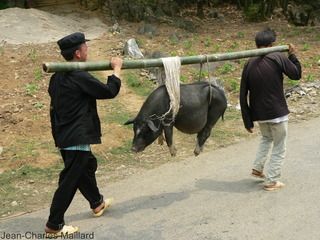Analyse du réseau de la filière des porcs malades dans le nord du Vietnam : risque de diffusion de la maladie
DOI :
https://doi.org/10.19182/remvt.31872Mots-clés
porcin, chaîne d’approvisionnement alimentaire, évaluation du risque, maladie des animaux, fraude, VietnamRésumé
Une étude a été menée entre janvier et juillet 2016 pour enquêter sur le réseau de commerce de porcs malades qui serait en activité dans le nord du Vietnam depuis des décennies. Depuis début 2015, de nombreux avertissements sur l’existence de ce réseau illégal ont été publiés dans les journaux locaux, ce qui a suscité une grande inquiétude chez les consommateurs et les autorités. L’objectif de cette étude était d’enquêter sur la filière pour identifier le réseau commercial, évaluer le risque de diffusion de la maladie et proposer des solutions préventives. Les résultats ont montré que la chaîne de production des porcs malades comprenait des agriculteurs, des intermédiaires, des abattoirs et des consommateurs dans les trois districts étudiés (Van Lam, Van Giang et My Hao, dans la province de Hung Yen). L’évaluation qualitative des risques a déterminé que les intermédiaires et les abattoirs étaient les acteurs principaux de cette filière non contrôlée. Une réglementation administrative appropriée, indépendamment de l’importance de ces acteurs, serait cruciale pour limiter les effets négatifs des produits issus de porcs malades. En outre, une intervention adaptée ôterait les menaces pesant sur les autres élevages et éviterait les effets à long terme sur la santé
humaine.
Téléchargements

Téléchargements
-
Résumé1518
-
pdf 384
Publié
Comment citer
Licence
© M.N.Hoang et al., publié par CIRAD 2020

Ce travail est disponible sous la licence Creative Commons Attribution 4.0 International .





